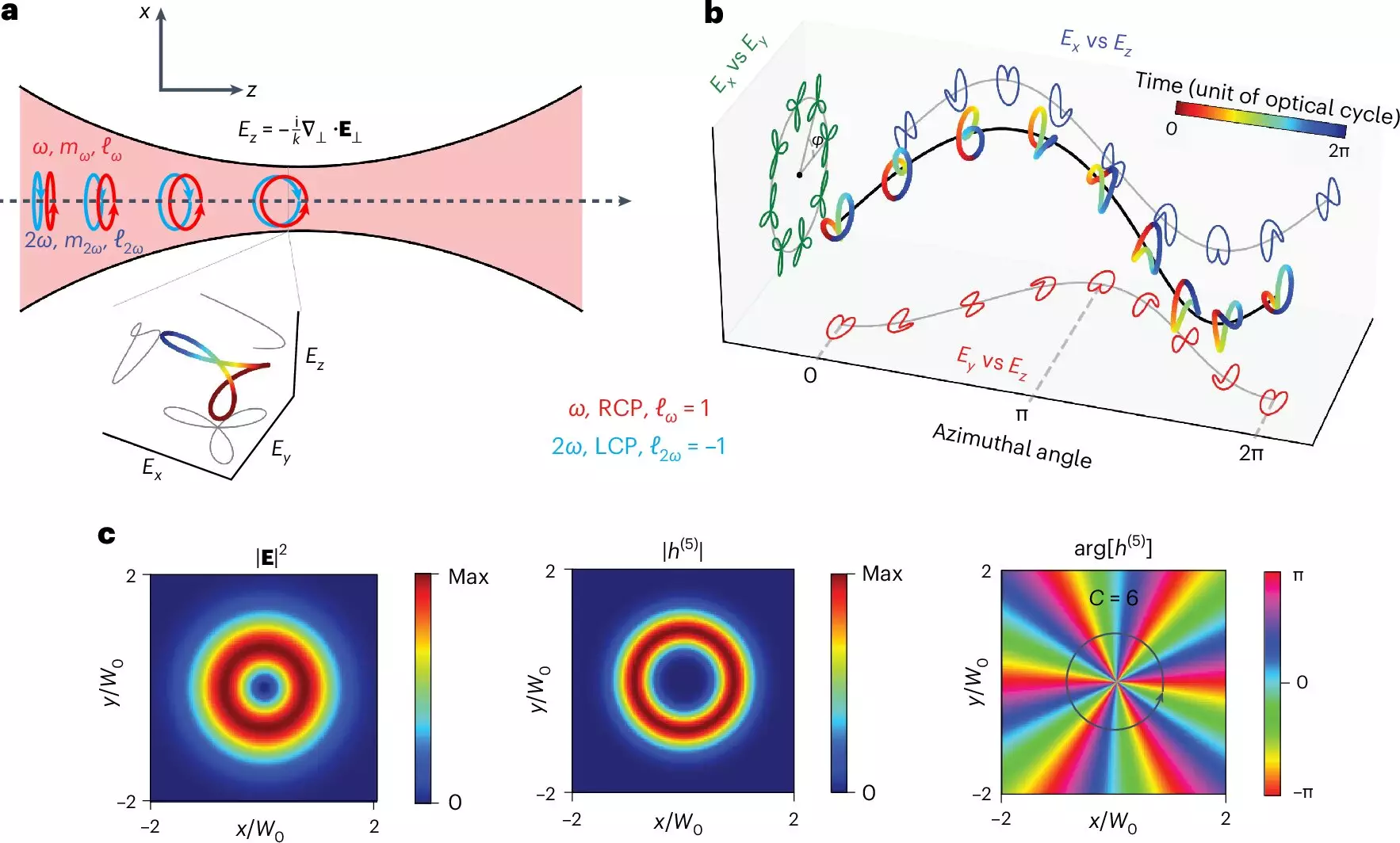Recent advancements in photonics have led to a groundbreaking methodology for measuring chirality in molecules, which promises to have significant implications for the pharmaceutical sector. A collaborative research effort between King’s College London and the Max Born Institute has given birth to a novel light structure known as the “chiral vortex.” Published in the prestigious journal Nature Photonics, this innovative technique traces a chiral curve that evolves over time, a revelation that could significantly influence drug development and safety.
Chirality, the property of asymmetry in molecules, plays a crucial role in various scientific fields, particularly in pharmacology. Much like human hands, many molecules exist as “mirror images” of one another, categorized as either right-handed or left-handed. This molecular handedness can drastically influence how substances interact with biological systems. Consequently, understanding and measuring chirality is essential for ensuring drug efficacy and safety, as evidenced by the tragic case of thalidomide in the 1950s. Its devastating effects on fetal development underscore the need for precise chirality assessments in pharmaceutical applications.
The potency of chirality is well-illustrated through historical examples like thalidomide, where the consequences of chiral imbalance caused widespread harm. The drug’s racemic mixture, which contained equal amounts of both chiral forms, proved disastrous when it was discovered that one version was responsible for severe birth defects. Such historical lessons emphasize the imperative for pharmaceutical manufacturers to ensure rigorous chiral assessment of their compounds before reaching consumers.
In light of these lessons, advancements in measuring chirality are nothing short of remarkable. Traditional detection methods often involve labor-intensive and expensive optical techniques that rely on large sample sizes to differentiate between chirality types accurately. However, the newly developed chiral vortex technology addresses these challenges head-on by offering an innovative, robust, and highly sensitive approach to detection, making it a crucial tool for drug developers.
The chiral vortex functions by employing a specially-modulated light structure that creates a vortex-like electric field, continuously tracing a chiral curve. This curve’s handedness varies spatially, allowing it to engage with chiral particles in a novel manner. When a chiral molecule interacts with this vortex, it emits light through a phenomenon known as high-harmonic generation, producing distinct and recognizable patterns. These patterns effectively rotate in space based on the molecule’s handedness, facilitating more precise measurements.
This new technique is vital as it can detect even the slightest deviations in the ratios of right- and left-handed molecules, such as a sample consisting of 49% right-handed and 51% left-handed chirality. This sensitivity is particularly significant in light of the potential repercussions of miscalculating chirality in pharmaceuticals. As Dr. Nicola Mayer, a key researcher in this study, pointed out, the ability to differentiate minute differences in chirality can be critical in drug development and toxicology assessments.
Furthermore, the chiral vortex’s robustness against fluctuations in light intensity marks a significant improvement over previous methods. By minimizing experimental variability, this innovation empowers researchers and pharmaceutical scientists to achieve reliable and consistent results across a broader range of experimental conditions.
The implications of this technology extend beyond pharmaceuticals. Understanding electron behavior at the molecular level, facilitated by the emitted signals from chirality measurements, may lay the groundwork for groundbreaking advancements in chemistry. Enhancing our ability to control and influence chemical reactions using light could revolutionize various sectors, including materials science and nanotechnology.
Moreover, researchers are also contemplating the utility of the chiral vortex in the realm of quantum computing. By imprinting chirality onto quantum bits, or qubits, this innovative technique could enable an increase in data processing capabilities. By treating chirality analogously to binary code, researchers envision a future where quantum computers may harness the properties of chirality to boost computational efficiency and power.
The advent of chiral vortex technology marks a pivotal moment in the measurement of chirality in molecules. With significant ramifications for the pharmaceutical industry, it allows for more accurate assessments, ensuring the safety and efficacy of medications. As advancements in this field continue to progress, the potential applications in quantum computing and materials science present exciting avenues for future exploration, heralding a new era of scientific inquiry and technological innovation. This research not only highlights the importance of chirality but also signifies a remarkable leap forward in our understanding of molecular interactions, setting the stage for safer and more effective pharmaceuticals and cutting-edge advancements in technology.


Leave a Reply